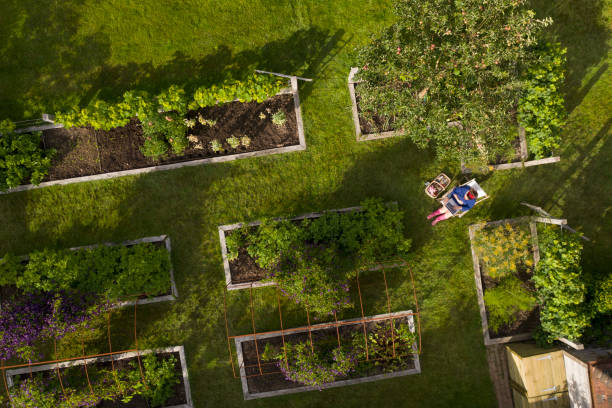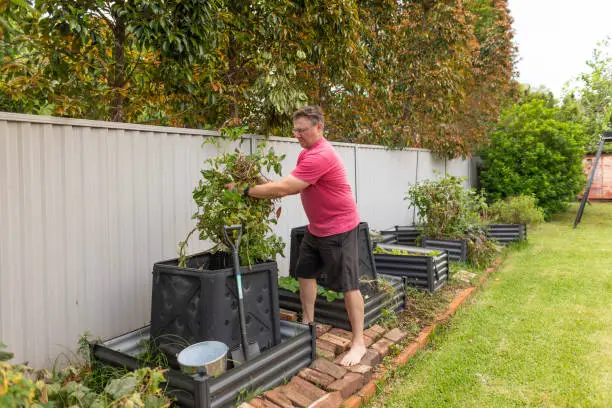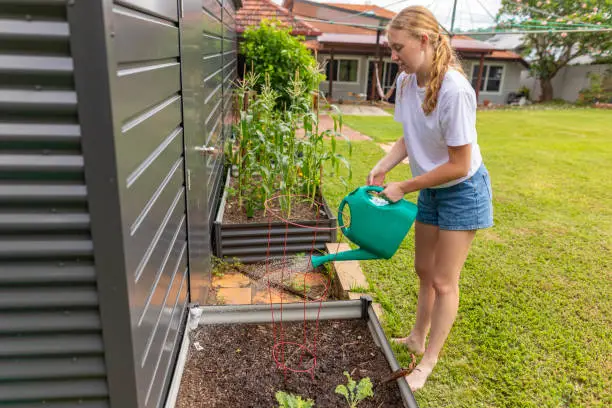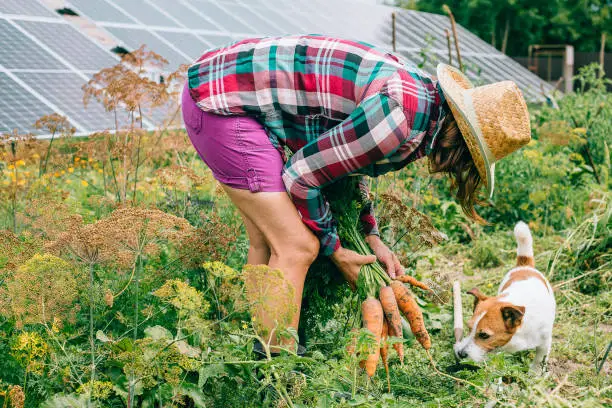DIY Root Cellar Storage: A Self-Sufficiency Guide
Root cellars, a throwback to simpler times, are famous in backyard homesteading. These clever underground storage methods use the earth’s insulation to keep perishables fresh without electricity. Root cellars are practical and sustainable, whether you’re a seasoned gardener with a surplus of vegetables to keep or a homesteader trying to preserve your crops.

Root cellars are perfect for storing fruits, vegetables, nuts, and even some beverages since they maintain a stable temperature and humidity. Unlike modern refrigerators, which use a lot of electricity, root cellars employ only the earth’s insulation. This decreases electricity use and keeps products fresh during power outages, which is helpful in storm-prone areas.
Finding the correct root cellar location is the first crucial stage in construction. We recommend building it into a hillside or partially underground to take advantage of the earth’s consistent temperature. Those without a natural slope in their yard can dig a hole to the necessary depth, but it’s more laborious. Reach a depth where the temperature is between 32 F and 40 F (0 C and four C), ideal for root cellar storage.
Root cellar design also requires ventilation. Proper air circulation avoids ethylene gas buildup, accelerating fruit and vegetable rotting. PVC pipes or a vent stack allow fresh air to circulate throughout the space, replacing stale air and maintaining appropriate humidity.
Insulation and moisture resistance must be considered when building root cellar walls and doors. For durability and waterproofing, modern root cellar builders may use concrete blocks or poured concrete instead of native stone or wood. In places with extreme seasonal changes, rigid foam or other insulation on the outer walls and roof helps regulate the internal temperature.
Root cellar interior design allows customization. Untreated wood or wire mesh shelving shelves store baskets and crates, allowing air to circulate the vegetables. Differentiating produce zones, such as ethylene-producing apples from potatoes, can extend harvest shelf life.
Beyond the building, the root cellar represents a land-based lifestyle. It promotes sustainability by storing garden bounty year-round and reducing waste. Homesteaders’ connection to the soil and its cycles is seen in their food and constructions.
Building a root cellar is a step toward self-sufficiency in an age where convenience trumps sustainability. This endeavor requires hard effort and a close connection to the land and its resources. Each phase allows you to customize the root cellar to your needs and surroundings, from site selection to ventilation system design.
For individuals on this path, the root cellar is more than a vegetable storage facility. It shows the persistence of traditional food storage methods modified for modern homesteaders. Whether built into a hillside or dug from flat land, the root cellar protects crops from weather and power failures and stores them long after the growing season.
While practical, this project allows you to interact with other homesteaders and environmental specialists. Online forums and local workshops can provide information, inspiration, and support while building your root cellar. These communities demonstrate that the knowledge and spirit are shared while families do the job.
By digging your root cellar foundation, you establish the foundations for a more sustainable and self-sufficient lifestyle. It’s a tangible representation of living in peace with nature, utilizing its resources without waste or contemporary conveniences. The root cellar’s simplicity and efficiency remind us of what we may achieve when we follow the earth’s rhythms.
Making a Cheap Home Drip Irrigation System
Watering your plants is crucial in backyard homesteading. Eco-conscious homesteaders might benefit from a drip irrigation system, which saves water and delivers moisture to plant roots. Establishing such a system isn’t expensive, despite popular opinion. With creativity and DIY spirit, building a drip irrigation system on a budget can be fun and improve your gardening skills.
Simple design and resources make a drip irrigation system affordable. Everyday things from the house or hardware stores can be used to build your irrigation system. Drip irrigation reduces evaporation and runoff by slowly distributing water directly to the soil surrounding your plants, making it very water-efficient.
Many homesteaders link their water source directly to a rain barrel to use natural rainfall as a sustainable water source. This method decreases municipal water or health demand and uses a neglected resource. A simple submersible pump, used in ponds or fountains, can transfer water from the barrel through the system to maintain flow when gravity fails.
The system’s heart is the distribution network made of polyethylene tubing. Easy to work with, this flexible tubing may be placed over garden beds to circle plants for focused watering. The emitters, where water drips into the earth, require the most inventiveness. While commercial choices exist, budget-conscious homesteaders have found several creative ways to make their own. Puncture small holes in the tubing at planting intervals or attach old soaker hoses to the main line for added flexibility.
Fittings and connectors needed to guide water flow and create system branches can be expensive to buy new. However, a recycling facility or landscaping company can typically provide used or surplus parts at a lower rate. Sometimes, you can reuse discarded irrigation supplies.
Implementing drip irrigation requires soil science. Understanding your garden soil’s water retention and drainage qualities is essential for emitter spacing and irrigation duration. This understanding prevents water waste below the root zone and ensures your plants have enough.
Adding a timer to your system might help it water plants at the best times, usually early morning or late evening. Programmable timers are pricey, but even a primary manual timer may avoid over- or under-watering and enhance irrigation efficiency.
Monitoring and maintenance complete the process. To work effectively, the system must be checked for leaks, obstructions, and damaged tubing. Fortunately, DIY drip irrigation system repairs are usually easy and affordable, requiring only spare tubing and connectors.
Your drip irrigation system connects you to your garden beyond its practical benefits. It requires observation to understand each plant’s demands and your garden’s microclimates. This hands-on approach enhances gardening skills and raises awareness of nature and its resources.
For backyard homesteaders, a drip irrigation system represents sustainability and self-reliance. It shows that with some knowledge and effort, you can build efficient, profitable gardening systems without pricey, high-tech solutions. Reusing materials and conserving water are all part of the project’s dedication to sustainable gardening.
This drip watering method shows that gardening innovation sometimes requires new gadgets or technologies. Some of the best gardening solutions come from necessity and innovation, demonstrating their adaptability and resourcefulness. The DIY drip irrigation initiative is about sustainable living and building a more resilient and self-sufficient community, not merely saving money or water.






Leave a Reply